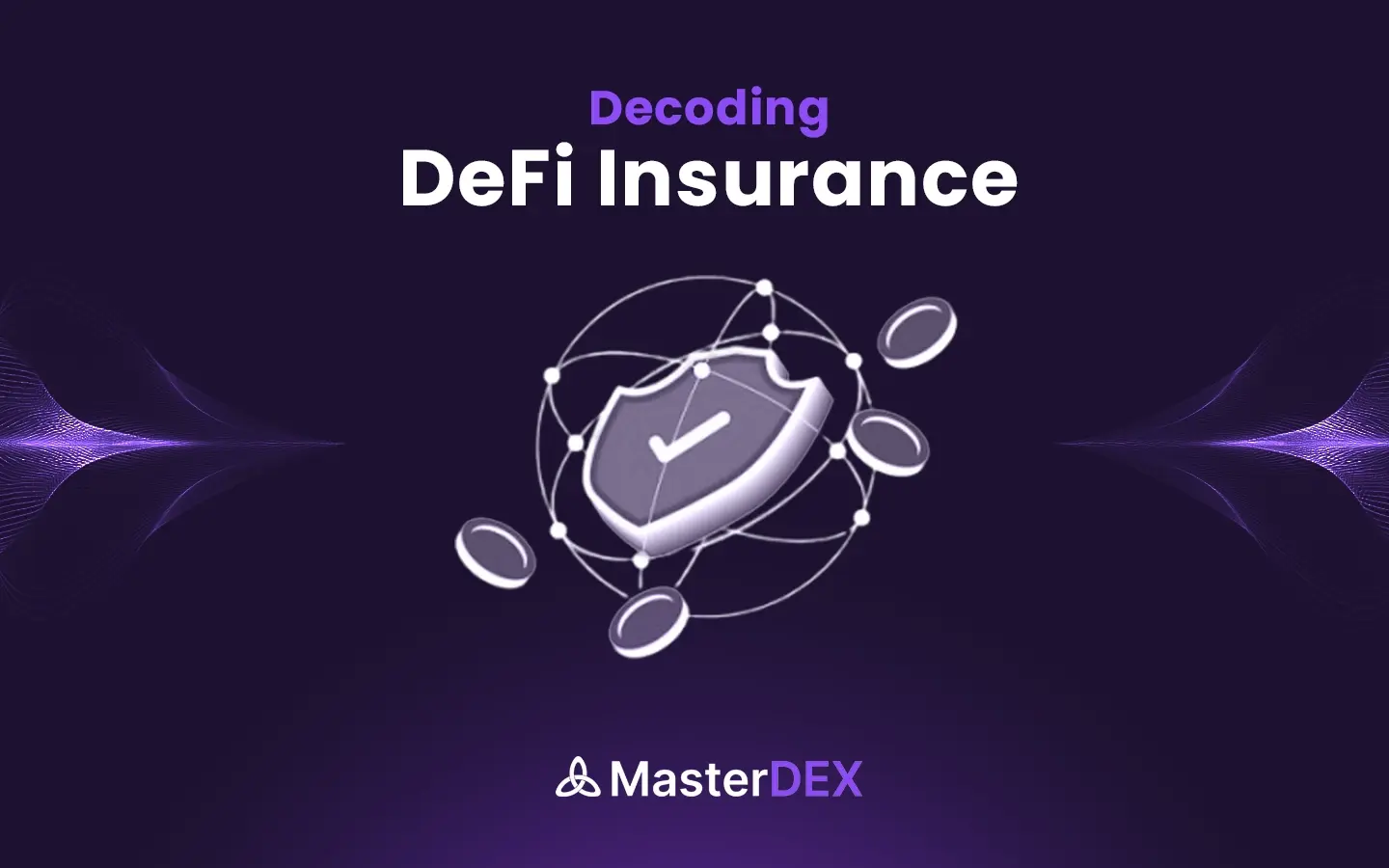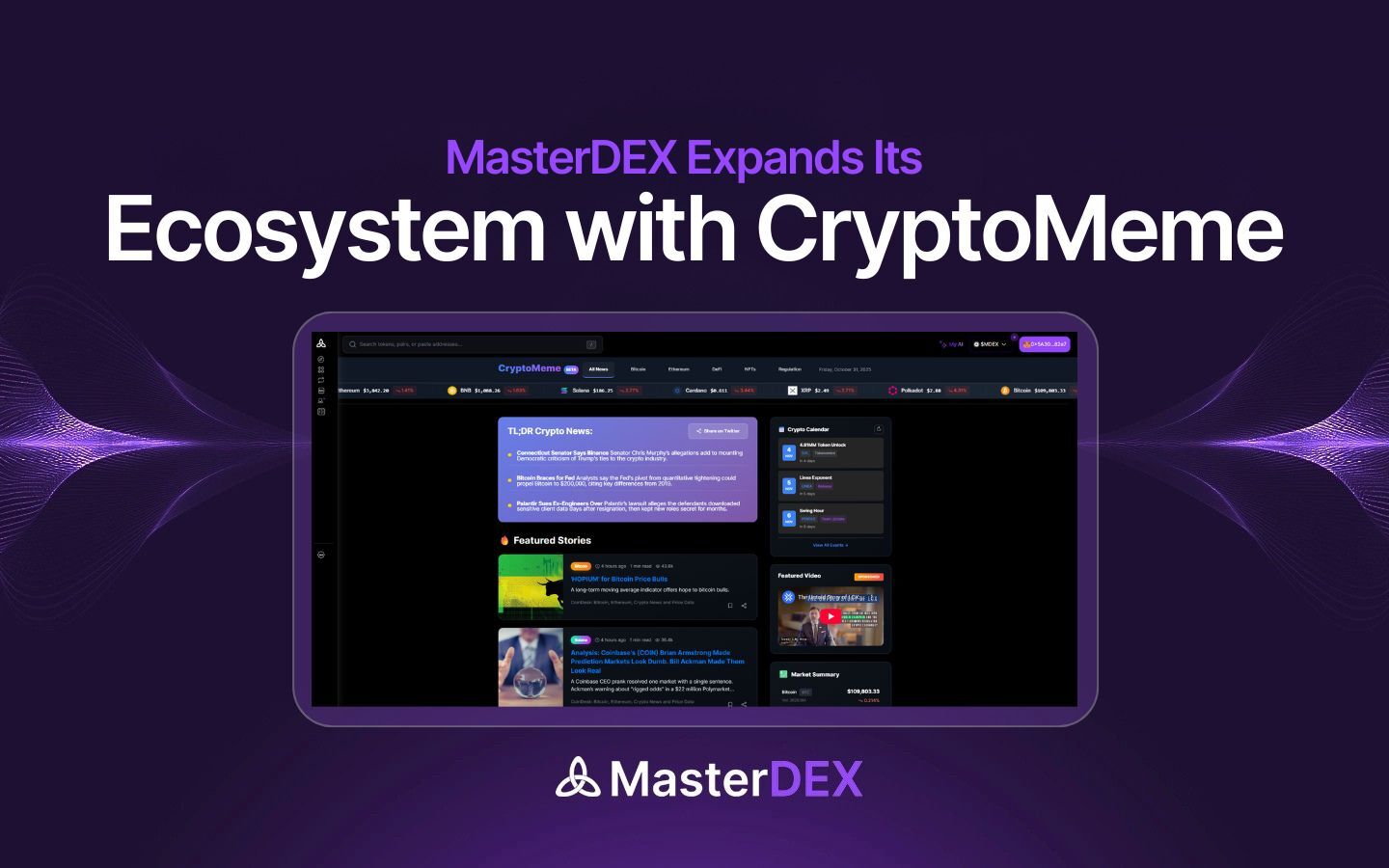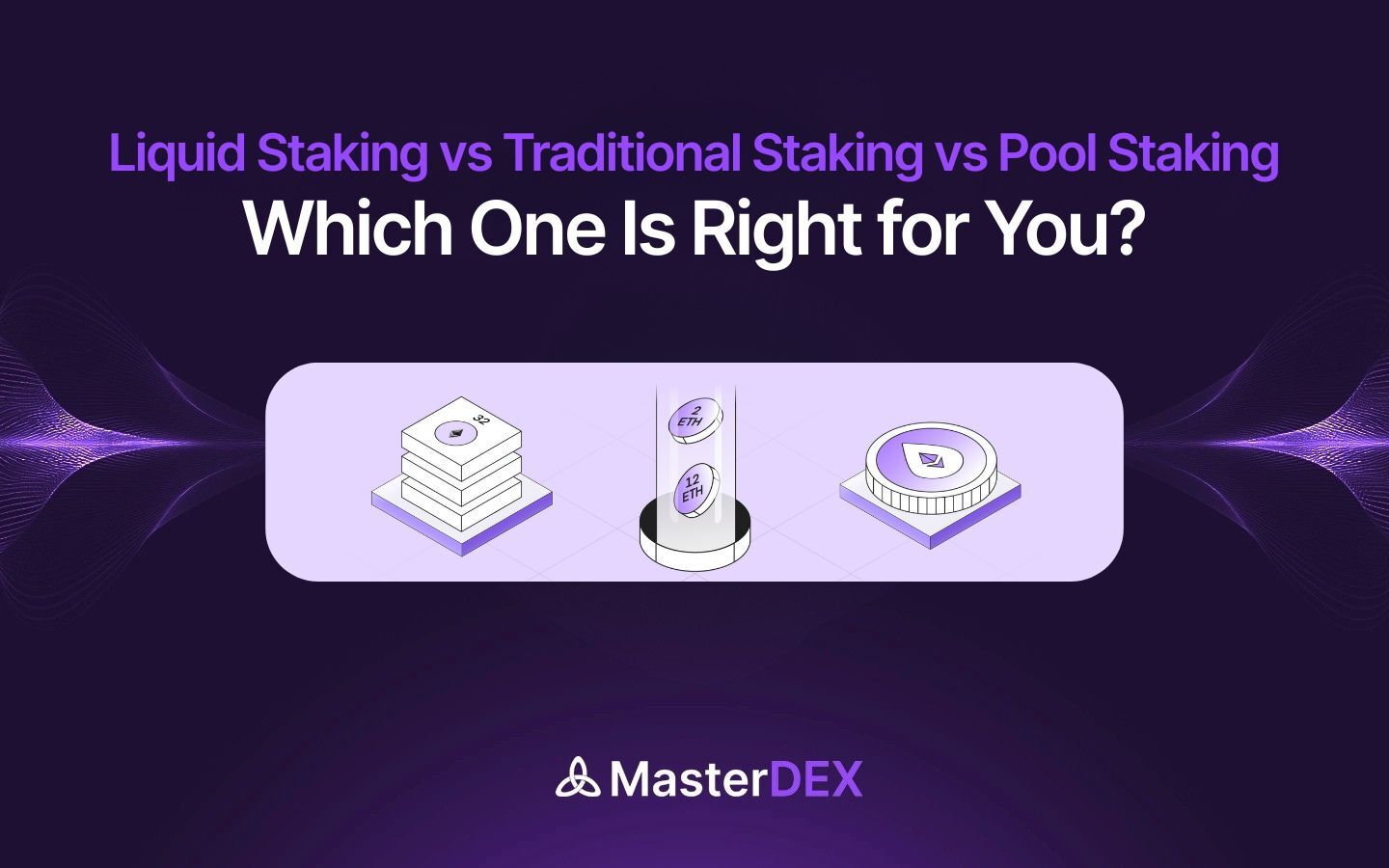Decentralized Finance—popularly known as DeFi—has completely transformed the way we think about money, investing, and financial freedom. With just a smartphone and an internet connection, anyone can lend, borrow, trade, or earn interest on their crypto assets without needing a traditional bank.
But DeFi’s open and permissionless nature also brings risks. Smart contracts have been hacked. Protocols have been exploited. Stablecoins have lost their peg. These events have led to millions in user losses. Unlike traditional finance, there’s no bank to bail you out. In DeFi, you’re on your own—without a built-in safety net.
This is exactly where DeFi Insurance steps in.
It’s a fast-growing sector within the blockchain ecosystem, designed to bring an added layer of security to crypto users. Just like how you’d insure your car or home against accidents, DeFi Insurance allows investors to protect their digital assets from events like smart contract bugs, platform failures, or sudden market crashes.
And the best part? It’s entirely decentralized—powered by smart contracts, governed by communities, and built to be transparent and inclusive. No middlemen. No lengthy paperwork. Just a system designed to make DeFi safer for everyone.
In this blog, we’ll explore what DeFi Insurance really is, how it works under the hood, the most popular platforms providing this service, and how it compares to traditional insurance models. We’ll also dive into the benefits, limitations, and what the future holds for this essential DeFi innovation.
Table of Contents:
ToggleHow Does DeFi Insurance Work?
DeFi Insurance might sound complex at first, but once you understand how it functions behind the scenes, the process becomes surprisingly intuitive. Just like buying car or travel insurance in traditional finance, DeFi Insurance starts with users purchasing coverage for specific risks they want protection against.
To get insured, an investor picks a coverage plan from a DeFi insurance protocol. These protocols offer protection against common DeFi threats like smart contract bugs, exchange hacks, stablecoin depegs, and sharp price drops. After choosing the risk type and coverage duration, the investor pays a premium. The premium varies based on the protocol’s risk level, the length of the coverage, and the provider’s pricing.
But who provides the actual capital behind these insurance policies?
That’s where underwriters come in. In DeFi, anyone can become an underwriter. These are individuals or institutions that supply funds to capital pools that back the insurance coverage. Before committing their funds, underwriters assess the type of risk they are willing to support. In return for providing this liquidity, they earn premiums paid by insured users, as well as potential rewards in the form of governance tokens.
However, their role comes with risk. If a legitimate claim is made, the payout comes from the capital they’ve contributed, leading to a potential loss.
Once the coverage is active, and if a covered event occurs such as a protocol failure, the insured user (claimant), can submit a claim to the insurance protocol. This claim includes relevant on-chain data, transaction records, and any additional information to prove that the loss meets the conditions of the coverage.
At this point, governance comes into play. Most DeFi insurance platforms are decentralized and community-governed via DAOs (Decentralized Autonomous Organizations). This means that users holding the platform’s governance tokens play a critical role in managing the protocol. These token holders are empowered to vote on various decisions—including whether a claim is valid. Their decisions are often guided by data provided through oracles, which are digital bridges that bring off-chain data (like market movements or exploit events) onto the blockchain.
If the community verifies and approves the claim, they release the payout straight to the claimant’s wallet.
The payment comes from the shared capital pool. But if the community rejects the claim—perhaps due to missing evidence or because the terms of coverage weren’t met—the user doesn’t receive any compensation. In that case, the capital pool stays intact.
So, in essence, DeFi Insurance empowers the community to share risk, make transparent decisions, and manage every step—from buying a policy to receiving payouts—through smart contracts and on-chain voting. It turns the traditional insurance model upside down by giving users control instead of relying on centralized companies.
Top DeFi Insurance Platforms
As the DeFi landscape continues to evolve, several insurance protocols have emerged to help users manage risk in a decentralized way. These platforms vary in design, governance, and coverage types, but they all share one mission—to make decentralized finance safer.
Let’s take a closer look at some of the leading players in the DeFi insurance space.
Nexus Mutual
Nexus Mutual is one of the pioneers of decentralized insurance. Launched in 2019, it offers coverage for a wide range of risks, including smart contract failures, custodial exchange risks, and protocol-specific exploits.
What makes Nexus Mutual unique is its use of a mutual model. This means that users collectively pool their funds, assess risk together, and vote on claims using the platform’s native token, NXM. Policies are priced based on demand, risk level, and historical data, and members must undergo KYC (Know Your Customer) verification to join.
While Nexus Mutual began by offering smart contract cover, it has since expanded to Protocol Cover and Custody Cover, making it one of the most versatile platforms out there. Despite some early criticisms about its centralized KYC process, its strong governance model and track record have earned it a trusted reputation.
InsurAce
InsurAce stands out for offering multi-chain coverage across Ethereum, BNB Chain, Avalanche, and other popular networks. The platform lets users protect themselves from a variety of threats like smart contract hacks, stablecoin depegs, oracle failures, and even slashing events.
One of the key strengths of InsurAce is its capital efficiency. Unlike other platforms that require over-collateralization, InsurAce utilizes advanced actuarial models to manage reserves and minimize excess liquidity. This allows for lower premiums, which makes it an attractive choice for cost-conscious users.
InsurAce is governed by the INSUR token, which is used for staking, governance, and rewarding liquidity providers. It also allows users to create portfolios of coverage, making it ideal for institutional players or whales with diverse DeFi exposure.
Bridge Mutual
Bridge Mutual takes a privacy-first, fully decentralized approach to DeFi insurance. Unlike Nexus Mutual, it does not require KYC, making it more aligned with the ethos of crypto users who prioritize anonymity.
This platform focuses on coverage for stablecoin failures, smart contract vulnerabilities, and custodial exchange risks. It also includes an open marketplace model where anyone can provide coverage liquidity and earn rewards.
Bridge Mutual’s governance is driven by the BMI token, allowing token holders to vote on claim validations and protocol upgrades. One of the unique aspects of Bridge Mutual is its approach to auditing and monitoring protocols in real time, which helps in identifying threats before they impact policyholders.
Unslashed Finance
Unslashed Finance is a capital-efficient insurance protocol that brings together underwriters, claim assessors, and investors in one decentralized marketplace. It covers a broad array of risks, including custody risks, oracle failures, and exchange hacks.
Unlike many competitors, Unslashed prioritizes instant liquidity for underwriters and offers tokenized insurance policies, which users can trade or transfer. This adds a layer of flexibility not commonly found in traditional or decentralized insurance models.
Their token, USF, governs the platform and incentivizes both underwriters and claim validators. Unslashed has partnered with institutional-grade platforms and data providers, which enhances its credibility and risk modeling accuracy.
Risk Harbor
Risk Harbor is known for its completely automated, algorithmic claims process. This removes the need for human governance votes on claims and makes the platform faster and less biased.
It uses a risk marketplace where buyers and sellers of insurance coverage interact. Sellers provide capital to pools and earn yields, while buyers purchase policies against risks such as smart contract failures and DeFi protocol exploits.
The beauty of Risk Harbor is in its trustless and permissionless design. Claims are resolved using pre-coded parameters and oracles, making it one of the most objective insurance systems in DeFi. It currently supports multiple chains and is seen as a leader in the move toward fully autonomous insurance systems.
Advantages of DeFi Insurance
As DeFi continues to push the boundaries of traditional finance, it brings both innovation and unpredictability. While risk is a known companion in this space, DeFi Insurance acts as a protective layer, helping users navigate volatile markets with greater confidence. Here are some of the standout benefits that make DeFi Insurance a game-changer for Web3 participants:
Financial Peace of Mind
DeFi is exciting, but it’s also risky. With DeFi Insurance, users gain peace of mind knowing they have a safety net in place. This sense of protection helps investors explore the ecosystem with more confidence, especially during uncertain market conditions or when interacting with newer protocols.
User-Controlled Protection
Unlike traditional insurance where terms are pre-set and rigid, DeFi Insurance allows users to choose the type of risk, coverage duration, and sometimes even customize payout thresholds. It gives users more autonomy to tailor insurance plans that match their needs.
Transparent Claims Process
Because everything happens on-chain, users can view and verify claims, premiums, votes, and payouts in real time. This level of transparency builds trust in the system and removes the typical opacity associated with traditional insurance companies.
Data-Driven Risk Models
DeFi insurance protocols often use on-chain data, AI-driven analytics, and real-time risk assessments to price premiums and decide claims. This makes the process more accurate and less prone to subjective human error.
Community Governance
Token holders collectively decide on claims and policy upgrades, ensuring that decisions reflect the will of the users rather than the interests of a central authority. This democratization of decision-making aligns with the decentralized ethos of the blockchain space.
Boosts Trust and Adoption
By offering protection against worst-case scenarios, DeFi Insurance acts as a bridge for cautious users and institutions. It’s a critical tool for onboarding new users who might otherwise stay away due to fear of losing funds.
Risks and Challenges of DeFi Insurance
Despite its innovative approach and clear benefits, DeFi Insurance is still a young concept—one that’s evolving alongside the broader decentralized finance ecosystem. As with any emerging technology, it comes with its own limitations and growing pains. Understanding these challenges is essential for users, underwriters, and developers alike as the industry works toward building more reliable protection systems.
Limited Liquidity
Many DeFi insurance protocols struggle with having enough capital to cover large-scale incidents. If several claims are filed at once—say during a major market crash—there may not be enough liquidity in the pool to cover everyone.
Complex Claims Handling
Even though the process is decentralized, some claims still go through governance voting, which can lead to delays, bias, or inconsistent decisions. This uncertainty may frustrate users who expect fast, fair resolutions.
Fraudulent Claims and Moral Hazard
Since the system relies on user-submitted claims and community votes, there’s always a risk of manipulation. Users might attempt to exploit loopholes to file false claims, especially on anonymous platforms with no KYC requirements.
Imperfect Risk Models
DeFi protocols rely on algorithms and on-chain metrics to assess risk, but these models are not flawless. A protocol may underestimate the risk of a certain platform or smart contract, leading to underpriced premiums and potential financial gaps.
Oracle Dependencies
Oracles are essential for feeding real-world data into the system, but they are not immune to manipulation or failure. If an oracle is compromised or malfunctions, it can lead to incorrect claims assessments or false triggers.
Regulatory Uncertainty
As regulators begin to focus more on DeFi, insurance platforms may face legal scrutiny—especially those offering coverage without KYC or based in unclear jurisdictions. This could lead to future restrictions or even platform shutdowns.
Underwriter Risk
Underwriters take on the role of insurers in DeFi, and their capital is at stake. If a claim is approved, payouts come directly from their funds. This risk may discourage participation or lead to overly cautious underwriting that limits coverage options.
DeFi Insurance vs Traditional Insurance
The core purpose of both DeFi and traditional insurance is the same—protection against financial loss. But the way each system operates is fundamentally different. Let’s explore how these two models compare.
- Centralized vs Decentralized: Traditional insurance is managed by centralized institutions that control the entire process—from policy pricing to claim approval. In contrast, DeFi Insurance is decentralized, meaning decisions are made by the community or through smart contracts. There’s no single company in charge—just code, protocols, and governance token holders.
- Paperwork vs Permissionless Access: Getting insured in traditional finance often involves filling out forms, undergoing credit checks, and complying with KYC/AML procedures. DeFi Insurance, on the other hand, is permissionless. Most platforms allow anyone to buy coverage with a connected wallet—no identity verification required. It’s fast, borderless, and accessible to anyone with internet access.
- Slow Claims vs Automated Settlements: In traditional models, claims can take days or even weeks to be processed, often requiring human agents and lengthy investigations. With DeFi Insurance, smart contracts and oracles automate the claims process. Some platforms even offer instant, algorithm-driven payouts based on pre-set conditions—no human approval needed.
- Fixed Pricing vs Dynamic Premiums: Traditional insurers set premiums based on predefined risk categories and actuarial data. In DeFi, premiums are dynamic, often influenced by real-time data, protocol demand, and community risk assessments. Users can compare options across platforms to find better rates and coverage terms.
- Corporate Control vs Community Governance: Decisions in traditional insurance are made behind closed doors, usually in the interest of the company. In DeFi Insurance, governance token holders vote on claims, policy changes, and platform upgrades. This gives users a say in how the system evolves, aligning incentives across all participants.
- Regulated Stability vs Experimental Freedom: Traditional insurance is heavily regulated, which can create a sense of stability—but also leads to bureaucracy and limits innovation. DeFi Insurance operates in a mostly unregulated environment, offering freedom to experiment but also carrying legal uncertainty.
Comparison Table: DeFi Insurance vs Traditional Insurance
| Feature | DeFi Insurance | Traditional Insurance |
| Structure | Decentralized protocols & DAOs | Centralized institutions |
| Access | Open, permissionless, no KYC | Restricted, requires KYC and paperwork |
| Claims Processing | Automated via smart contracts & oracles | Manual, slow, handled by agents |
| Premiums | Dynamic, based on real-time risk and demand | Fixed, based on historical risk models |
| Governance | Community-driven, token holders vote | Controlled by corporate management |
| Transparency | Fully transparent, on-chain data | Opaque processes, limited visibility |
| Innovation Speed | Fast-paced, experimental | Slow, bound by regulatory procedures |
| Regulation | Mostly unregulated, evolving legal clarity | Heavily regulated and legally structured |
In summary, DeFi Insurance flips the traditional model by removing intermediaries, empowering users, and using automation to enhance transparency and efficiency. While it’s still maturing, its potential to reshape the insurance industry is already evident.
Conclusion: The Future of DeFi Insurance
DeFi Insurance is still in its early stages, but it’s already proving to be one of the most essential building blocks for the long-term success of decentralized finance. As the DeFi ecosystem continues to grow and attract more users, the need for safety nets will only become more urgent.
The future of DeFi Insurance looks promising—with trends pointing toward more automated, cross-chain, and composable solutions. We’re likely to see smarter risk models powered by AI and predictive analytics, as well as broader coverage that includes NFTs, DAOs, and real-world assets. As adoption increases, premiums may also become more affordable thanks to improved liquidity and more sophisticated underwriting models.
Another exciting direction is the development of interoperable insurance protocols, allowing users to purchase one policy that spans multiple blockchains and assets. This kind of integration could reduce fragmentation and simplify user experience—making insurance in DeFi as seamless as swapping tokens.
Of course, regulatory frameworks will also play a role. While current platforms operate largely in a legal gray area, future guidelines might bring much-needed clarity, security, and even institutional participation into the space.
In the end, DeFi Insurance isn’t just about covering losses—it’s about building trust in a decentralized world. It gives users the confidence to participate, experiment, and invest in new financial systems. And as the risks of Web3 evolve, so too will the tools we use to protect ourselves.
Because in the world of DeFi, the best offense is a good insurance policy.




